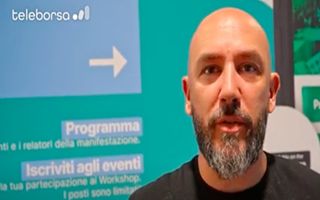(Finance) – “Here at REbuild we have spent many years talking about how technology had an impact on construction, on buildings and therefore how they could bring out information that would allow us to build them better and maintain them better”. He declared it Alberto Mattiello, REbuild Scientific Committee, during the tenth edition of the event dedicated to sustainable innovation in the built environment, which closed on Wednesday 15 May in Riva del Garda.
“Today generative AI instead changes the process that occurs before and after construction. Therefore, the entire conception, design and optimization phase of the projects and the entire subsequent maintenance phase will have a very large impact resulting from the fact that we will have a completely different possibility to evaluate options, to accelerate creative processes, but above all to remove all that captivity which today is very time consuming, takes up a lot of time from studies and which machines can do much better than us”, continues Mattiello.
In a few months we have become accustomed to talking to the computer, are we now also able to draw together with the machines? “Then we we will talk to everything. Then we will talk to our housewe will talk with the vacuum cleaner, we will talk with everything in the sense that the technology that will be pervasive will give these objects the possibility of be able to interface with them and therefore not having to look at an application to retrieve information but automatically ask the object itself to give me back what I need to know.
“In terms of design It will change the way people work with software a lot. Here if we were to simplify it, we forget all the buttons that we have learned to use in whatever software we use: tomorrow there will be a voice with which we will compare and there we will give all the indications in detail, in macro detail. Then be careful it doesn’t mean that everything will pass by rumor, many times seeing things gives you information much more quickly, but the interaction will certainly be increasingly vocal“.
As far as design is concerned, in a certain sense an enabling technology is that of virtual reality and augmented reality, what are the prospects in this sense? “There has been an evolution of the devices themselves that we have available. Definitely the device it has launched by Apple a few months ago is probably the jewel in the crown of this new technology. Being able to use increasingly lighter, increasingly efficient, augmented reality devices allows you to discuss, even remotely, three-dimensional data, allows you to co-design, allows you to work together, experience something, even if two people are truly on opposite sides of the world.
“Technology advances very quickly but above all the yield, that is, being able to have a three-dimensional, digital object, but inserted within a space with the visual quality for which I perceive it as if this is actually realit actually changes both the way I perceive the project, but above all I understand it as a process for example of construction is working or not working”, declares Mattiello.
Regarding generative algorithms for images, several problems related to copyright management have emerged in the last period. Do we also have the same risk with regards to planning and design? “Obviously yes, it is obvious that any information that is sensitive. Now I imagine someone who designs a public building or a sensitive building for various reasons and this is information that must remain private when you are not aware of what you are doing and you risk using some of this information within the engines which are then for public use, there is a risk that the engine will experience that information and once one has experienced it it is very difficult to contain it so anyone else in various ways could have access to the same information.
“It’s not an archive where information is placed and someone else can go and get it, but once that experience has been made, that type of inspiration can obviously be shared in that case. So yes, the risks are there. The important issue is on the one hand don’t limit yourself to testing things, so don’t use this as inertia in not trying all the new opportunities that this world is giving us, on the other side though we need to build a culture of artificial intelligence to allow anyone who works within a studio, for example, to know what information makes sense to share when in order to actually prevent problematic things from happening”, concludes Mattiello.
